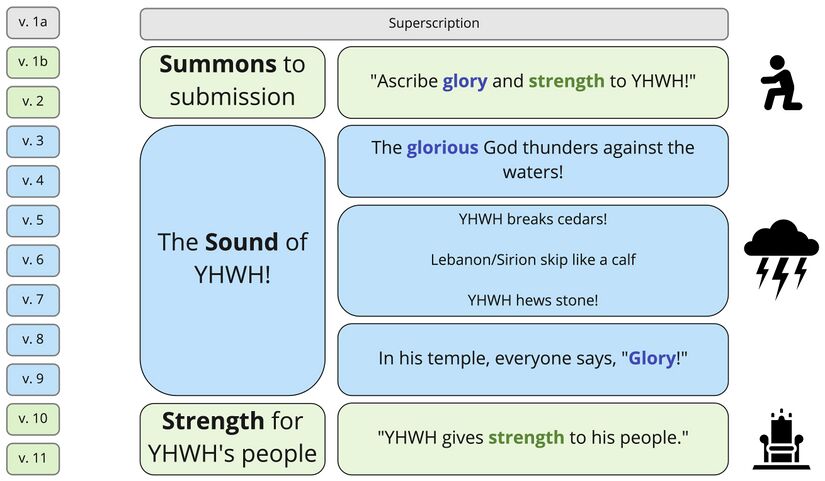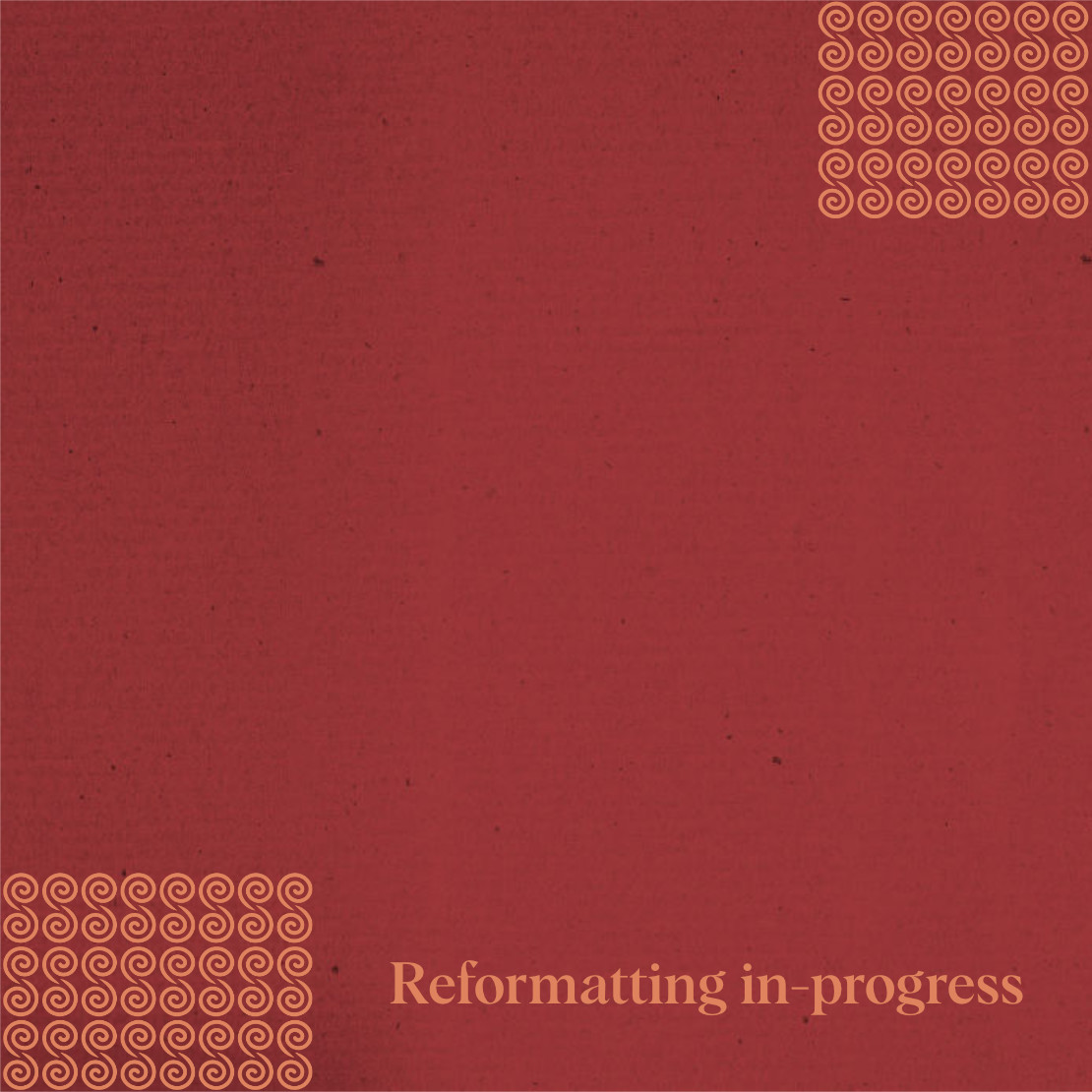Psalm 29 Overview
Welcome to the Overview of Psalm 29
This page will introduce and provide orientation to Psalm 29 as a whole. It includes the following sections:
Introduction to Psalm 29
Author:
Purpose:
- To celebrate YHWH's superiority over all gods, and to summon all to submit to him.
Content:
- Acknowledge YHWH's supremacy, divine beings! YHWH reigned over the Flood, and YHWH continues to reign!
Message:
- There is no other god like YHWH (cf. Ex. 15:11).
Psalm 29 At-a-Glance
These sections divide the content of the psalm into digestible pieces , and are determined based on information from many of our layers, including Semantics, Poetics, and Discourse. The columns, left to right, contain: the verse numbers; the main title of the section; a brief summary of the content of that section (quote marks indicate the text is taken directly from the English text of the psalm (as per our Close-but-Clear translation); and an icon to visually represent and remember the content.

Background Orientation for Psalm 29
Following are the common-ground assumptionsCommon-ground assumptions include information shared by the speaker and hearers. In our analysis, we mainly use this category for Biblical/Ancient Near Eastern background. which are the most helpful for making sense of the psalm.
- YHWH's heavenly court consists of lesser divine beings ('gods') whose duty it is to serve him (cf. 1 Kings 22:19; Job 1:6; 2:1; 38:7; Pss. 82; 89:6-7). The peoples of other nations worshipped these lesser divine beings (cf. Ps. 96:4-10; Isa. 36:18-20).
- The victory of one people over another implies the victory of their god(s) over the god(s) of the enemy (cf. Ex. 12:12; 14-15; Josh. 10:14; 2 Sam. 5:24; Isa. 36:18-20)
- Water is a symbol of chaos (Pss. 74:13-14; 89:10) and threat to God's people (Pss. 18:17, 32:6; 124:4). It could be used to symbolize foreign enemies (cf. Pss. 18:17-18; 46:4, 7).
- After defeating his enemies, a god would build a temple to dwell with his people (e.g., Baal myth COS I:241ff). Such temples were prototypically made of cedar (of Lebanon) and stone (cf. 1 Kgs 5:26-32; Baal myth COS I:261)
- YHWH sent "the Flood" to destroy the earth in the days of Noah (Gen. 6ff). Afterwards, he drove back the waters (Gen. 8:1f) and rescued Noah and his family (Gen. 8:1f).
- The following pattern of events is part of Israel's heritage: (1) YHWH triumphs over waters, (2) YHWH builds a temple, (3) Divine beings praise YHWH.
Background Situation for Psalm 29
The background situation is the series of events leading up to the time in which the psalm is spoken. These are taken from the story triangle – whatever lies to the left of the star icon.

Participants in Psalm 29
